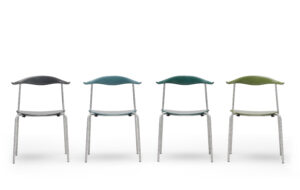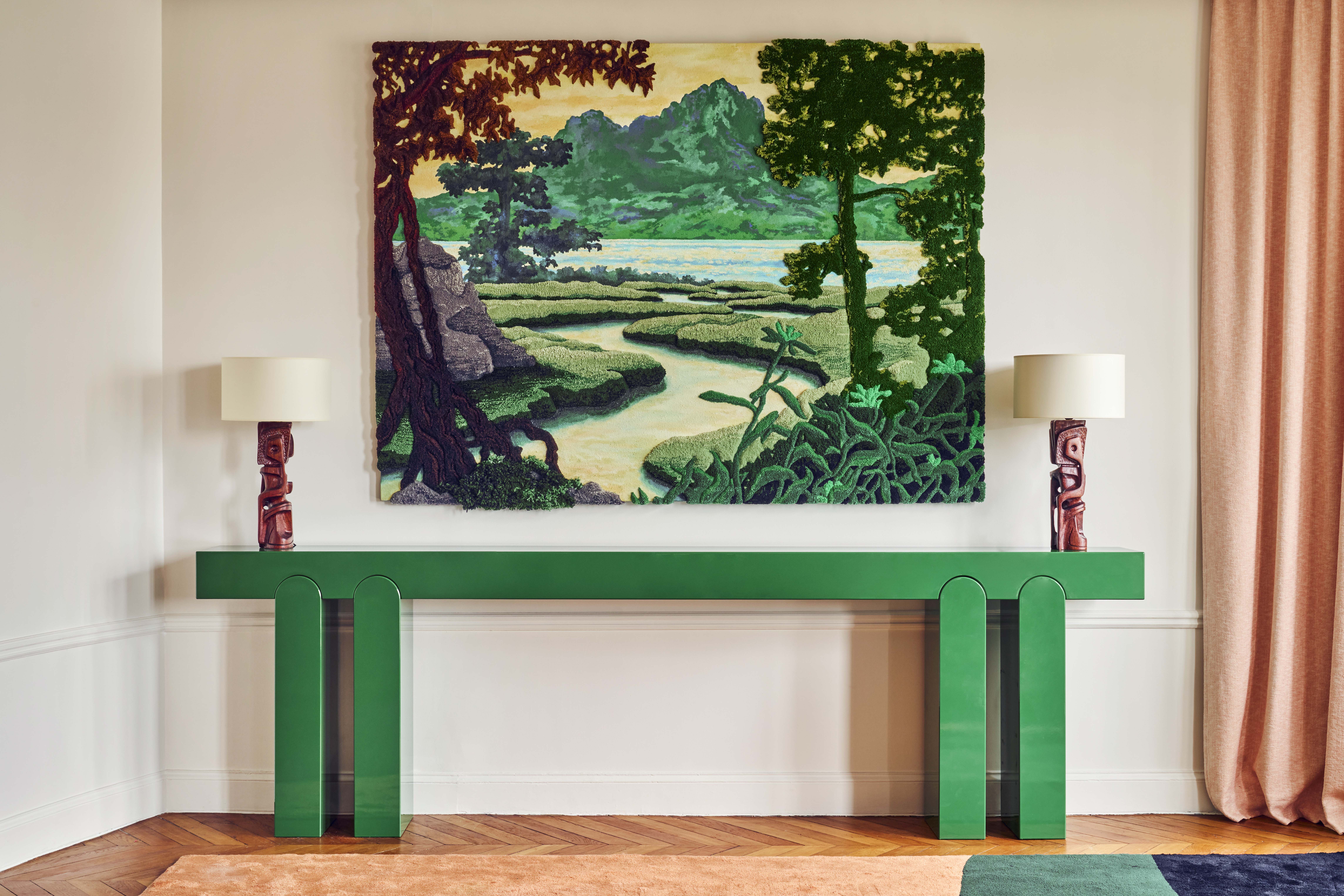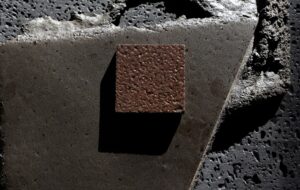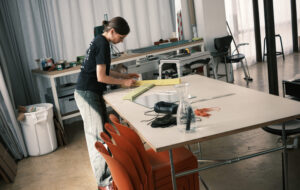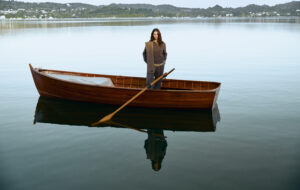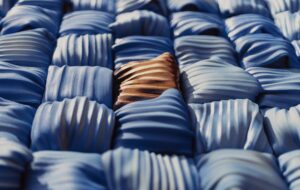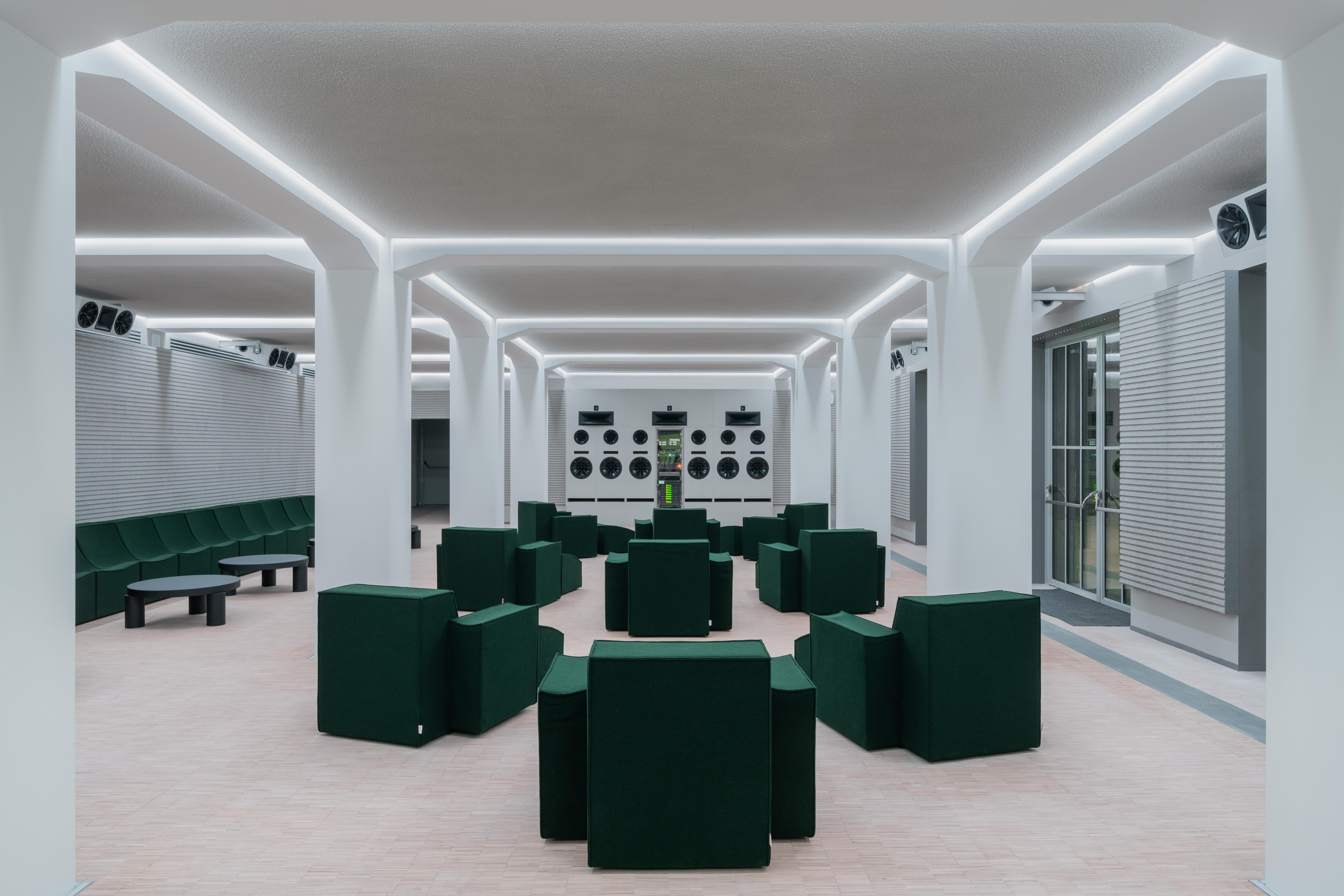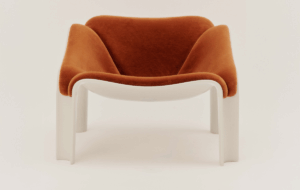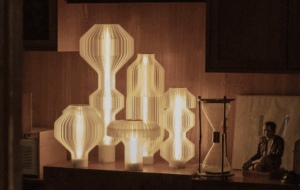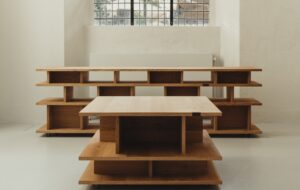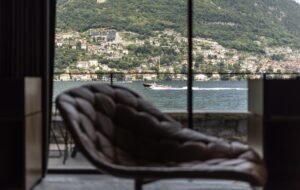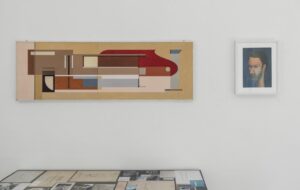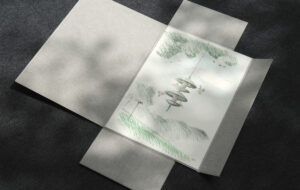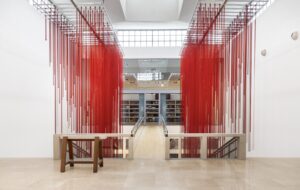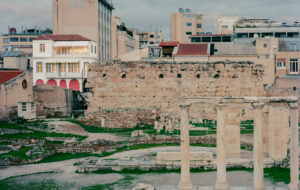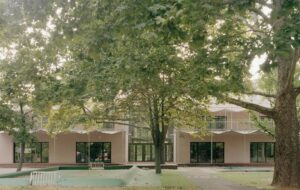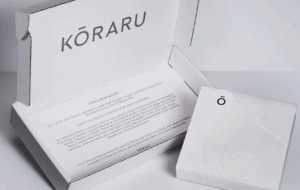Vorno’s spectacular Villa Marie provides a rich architectural backdrop and open-air gallery feel for the first edition by Vestigia and Italian-Polish designer Jonathan Bocca
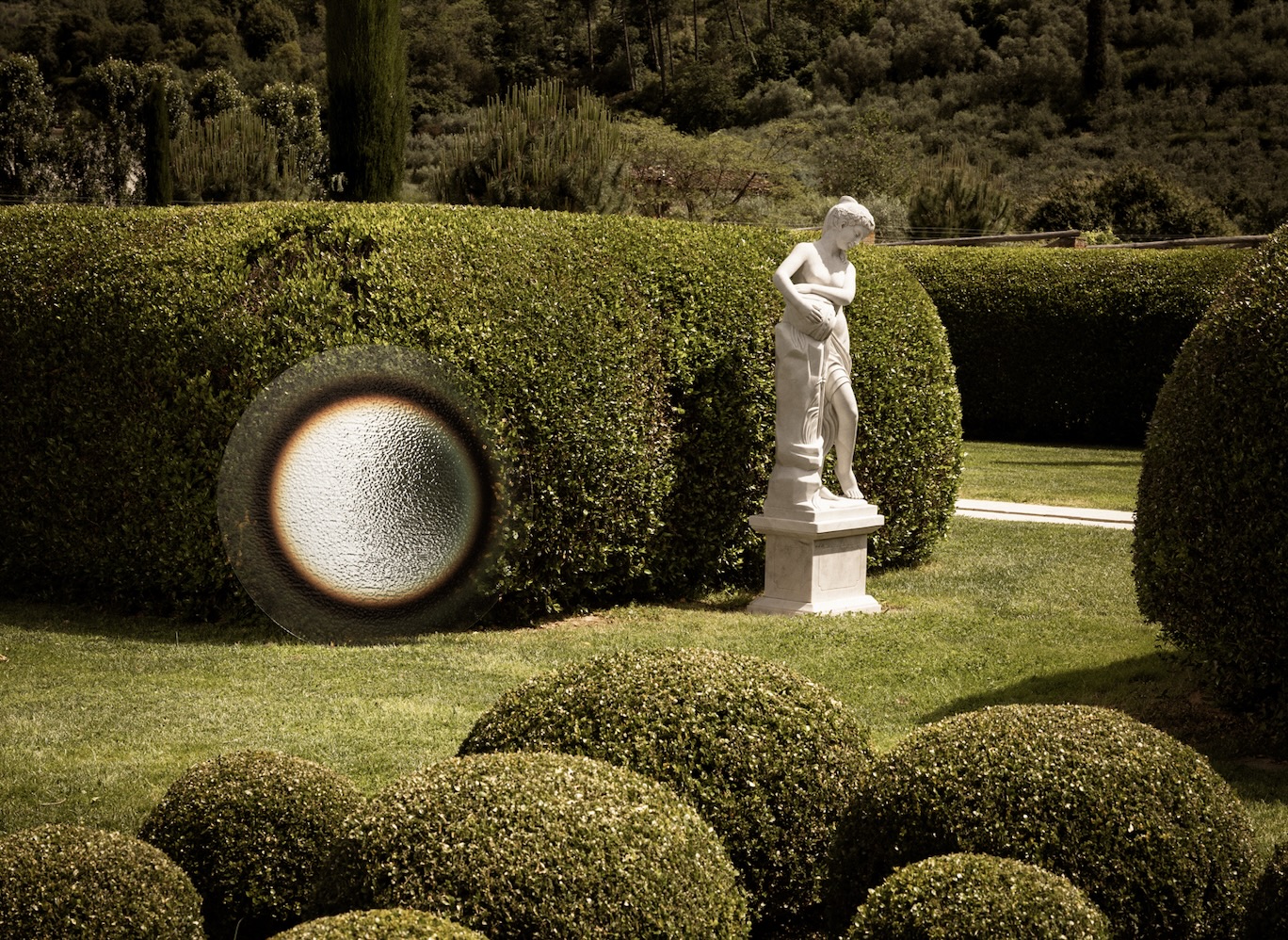
Photography by Dario Borruto featuring Oculus Celestia by Costantino Gucci
Words by Jessica-Christin Hametner
Just a few minutes from the historic centre of Lucca in the heart of Tuscany lies Villa Marie, a spectacular 18th-century residence, currently home to Design in a Real World, an eclectic exhibition meditating on Tuscan heritage and contemporary design.
The showcase is the brainchild of Vestigia, a newly founded platform for contemporary design and art, and Italian-Polish designer Jonathan Bocca, a Lucca native passionate about reviving Tuscany’s regional craftsmanship.
‘I wanted to celebrate design here in Tuscany because I think it’s a region that can produce a lot, but it also served as the location for the development of the Radical Design movement [in the 1960s and 70s],’ says Bocca of why he initiated the exhibition.
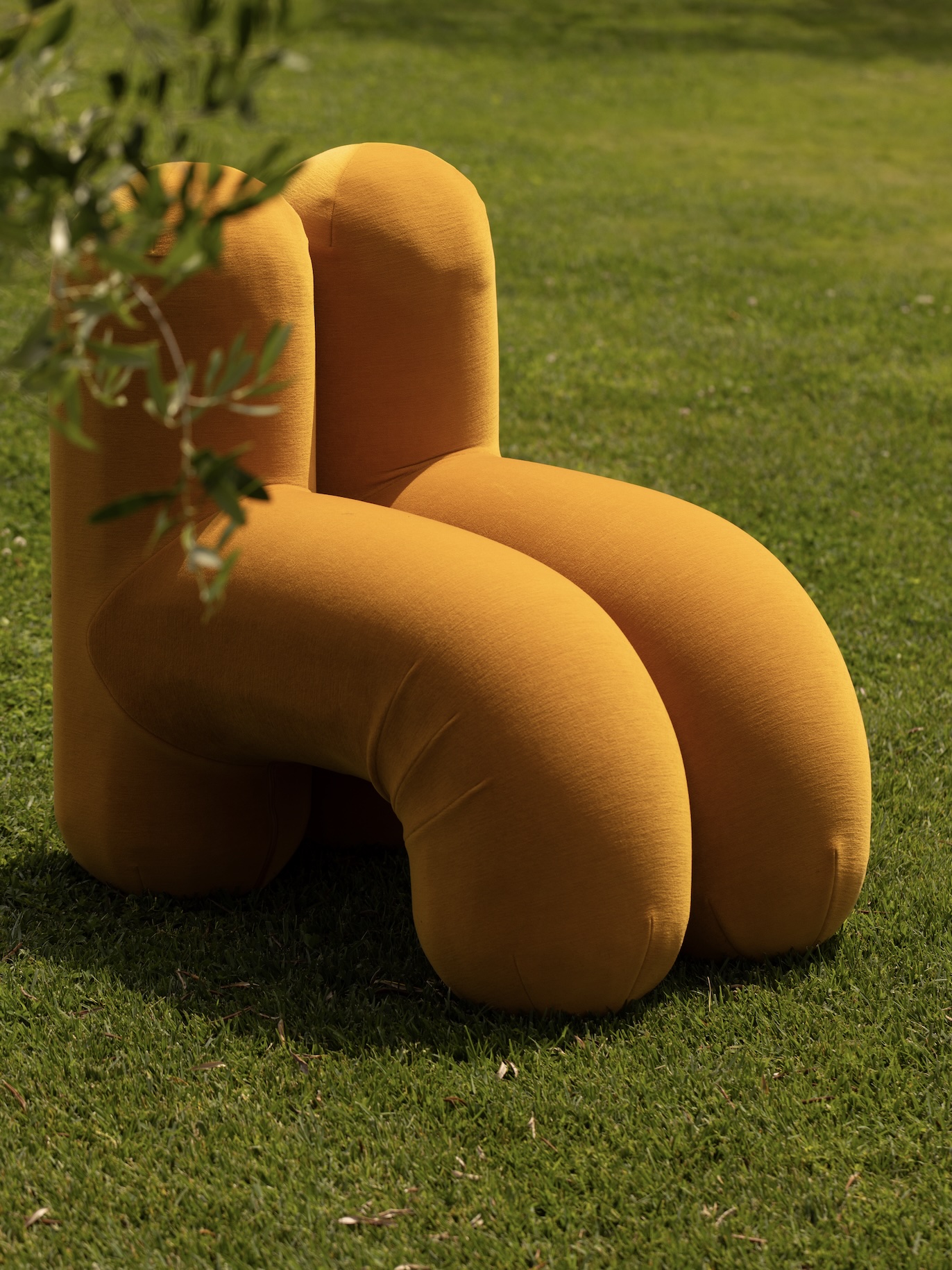
Photography by Dario Borruto featuring Urania by Pietro Franceschini
Set against the backdrop of the villa’s gardens, which have been tended by the Van Marcke family since 2015, the show-stopping pieces transform the estate into an open-air gallery, with over 10 artworks and designs on display by globally renowned designers, young Florentine galleries and established artists.
The first edition consists of chairs made of polyurethane foam, sculptural objects, and vases decorated with soft pencil lines alongside reflective materials like glass and mirrors. Together, the pieces reimagine artisanal Tuscan traditions using vivid, experimental techniques, and highlight the diversity of the region’s artistic practices.
‘We selected artists connected to handcraft and materiality,’ continues Bocca on what visitors can expect to see in the first edition – including time-honoured styles finding new expressions in contemporary forms. ‘This is one of the exhibition’s main topics of exploration.’
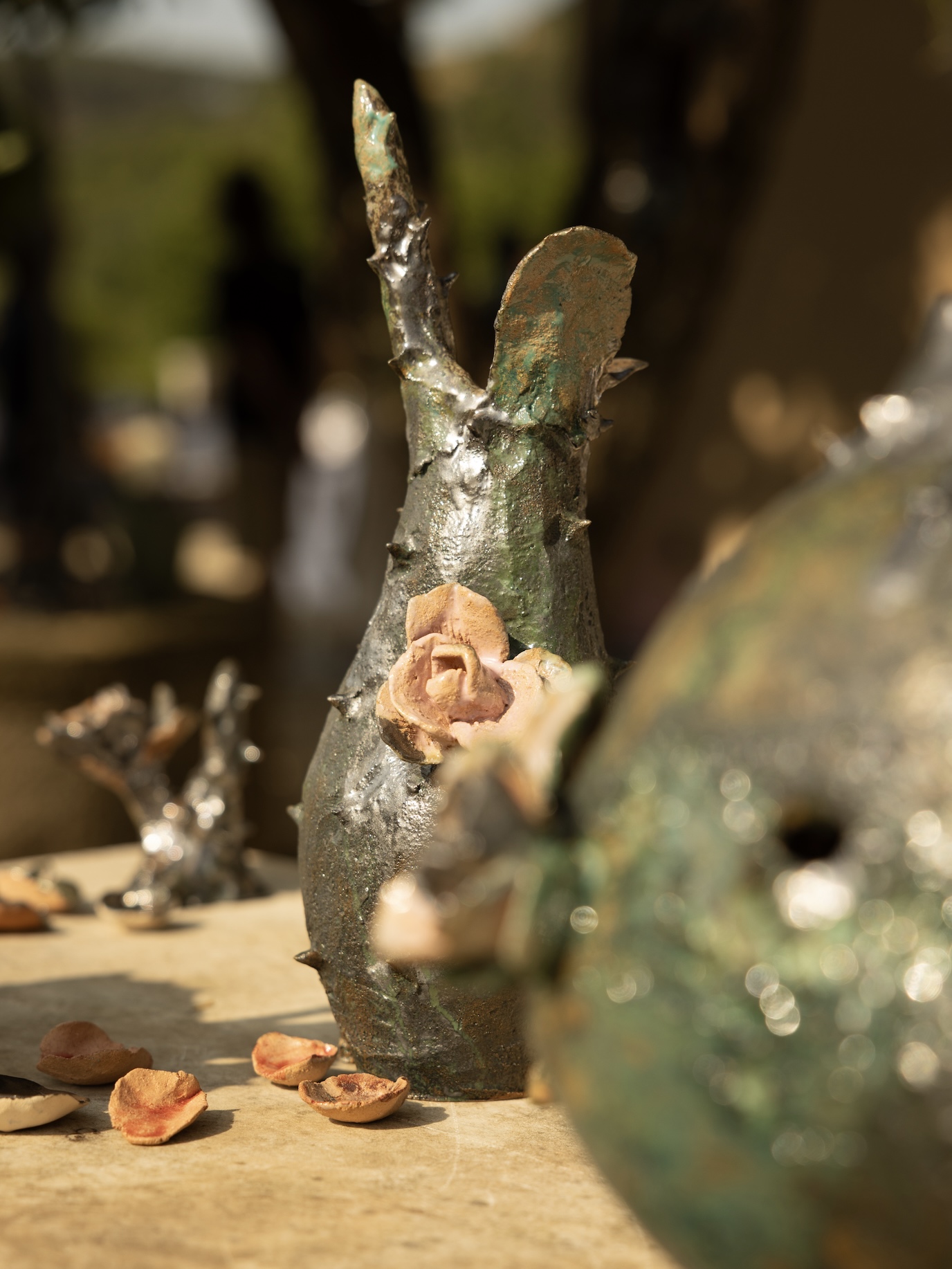
Photography by Dario Borruto featuring Vanitas by Ilaria d’Atri, Bunker Gallery
Among them, Ilaria d’Atri of Bunker Gallery presents Vanitas, a series of hand-moulded vases that combine organic forms and detailed finishes. Embellished with petals and leaves, the collection is a reflection of nature and prompts the viewer to find beauty in decay.
What initially began as a spontaneous project to challenge her work as a photographer and art director evolved into a collection of offbeat objects that both examine the process of decomposition as an essential part of nature, but also invite the audience to slow down.
‘I needed to create something with my hand, but also in my work as a photographer, the material is important,’ explains d’Atri. ‘When I started making an object by hand, it was very satisfying to create something three-dimensional and not just an image.’
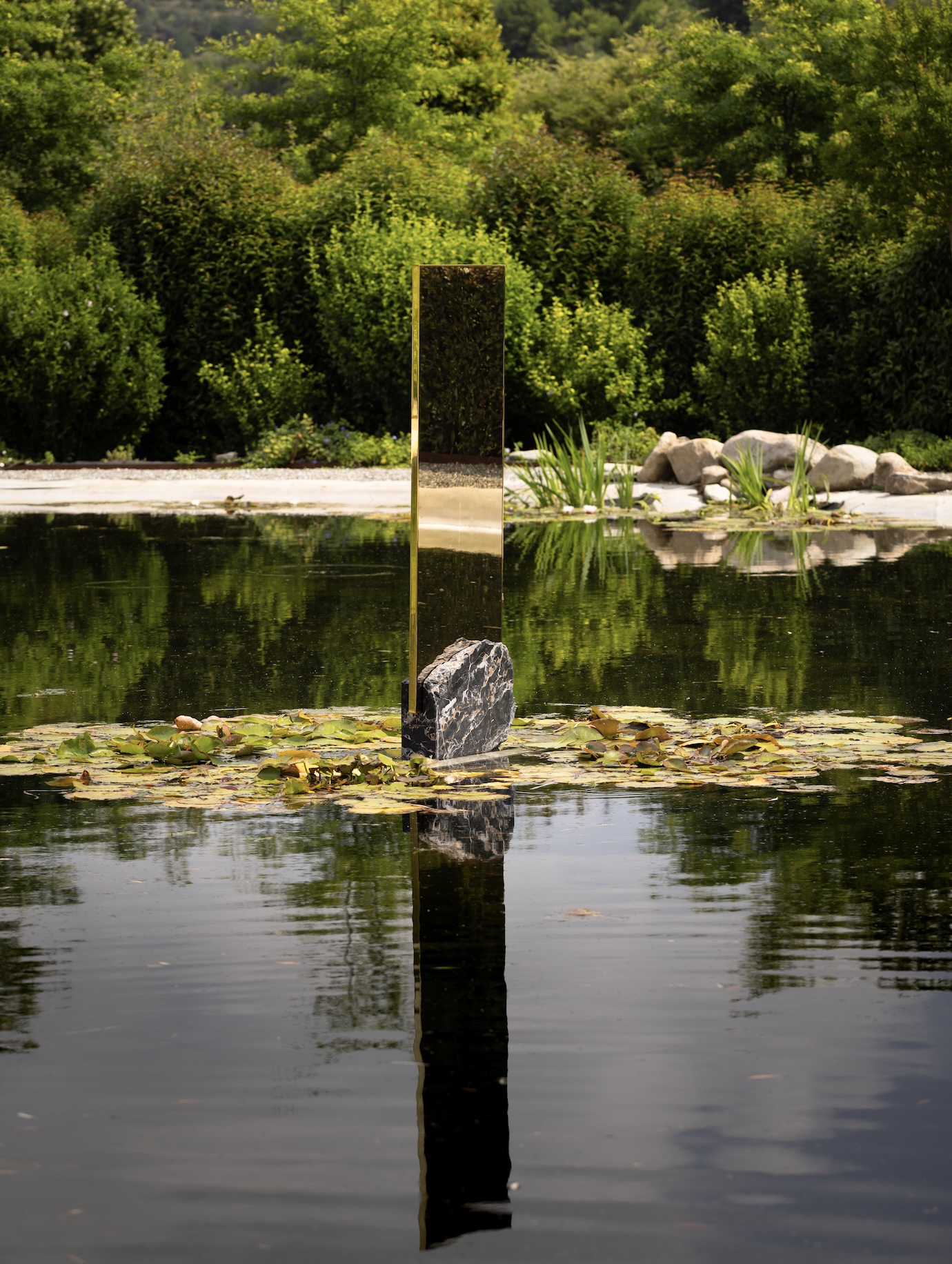
Photography by Dario Borruto featuring Lunae by FMM Design
Although the exhibition isn’t organised in chronological order, the objects presented as part of Design in a Real World take as its departure point, the concept of the territory, or “the real world”, reflecting its title.
A contrast to the constructed, artificial and often frenetic identity of the city and industrial design, the exhibition focuses on a slower, localised and more reflective artisanal perspective that portrays both the designers’ works and lives outside dense urban centres.
Bringing together objects in various mediums, the exhibition spotlights the connection between nature and humanity, revealed in themes such as imperfection and impermanence. Pisa-dwelling Francesco Maria Messina of FMM Design, for instance, openly embraces irregularity and asymmetry in his work.
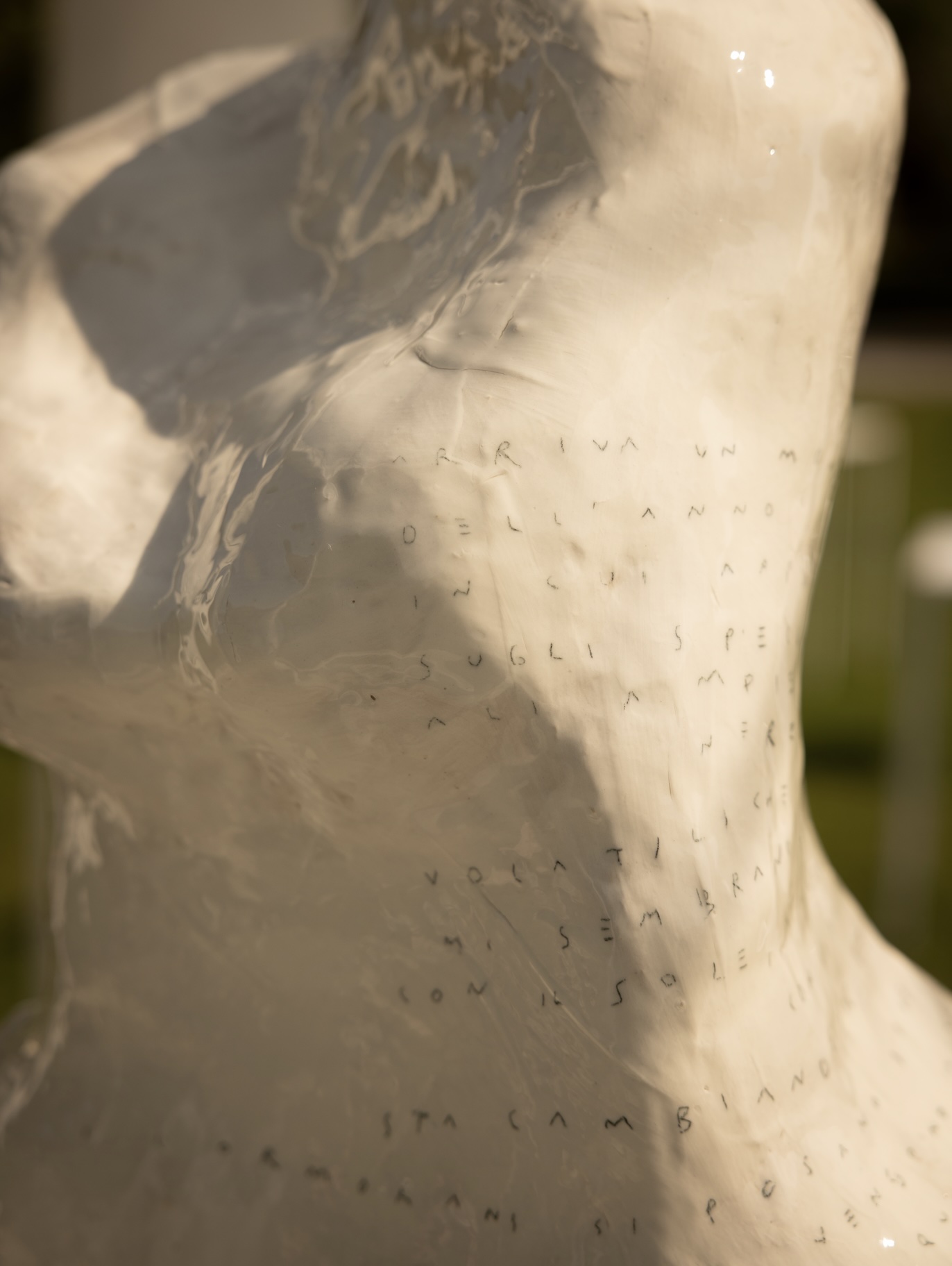
Photography by Dario Borruto featuring Ostraka by Ccontinua + Mamt
‘I like playing with contrast,’ explains Messina. ‘[One of the pieces I am presenting] is Silva, which comes from the Latin for “forest”. So, the idea is to mimic nature and find inspiration in birch wood. You can see the imperfections of the trunk and how the light plays with that.’
The lamp, also suitable for outdoor use, gently diffuses light through irregular openings like the nodes in a tree to create a soft glow. ‘The light you see through the leaves and branches in a forest inspired the roughness of the texture,’ adds Messina. ‘But at the same time, the simplicity of the shape is very minimalist.’
Others, like Fluid Identity, a joint project by Sara Ricciardi Studio and Luca Turelli Studio, reflect on time itself and feature fragile and fragmented silhouettes. Shaped like a face and scattered across the villa’s pool like large pieces of broken glass, the installation examines ideas around identity, self and society.
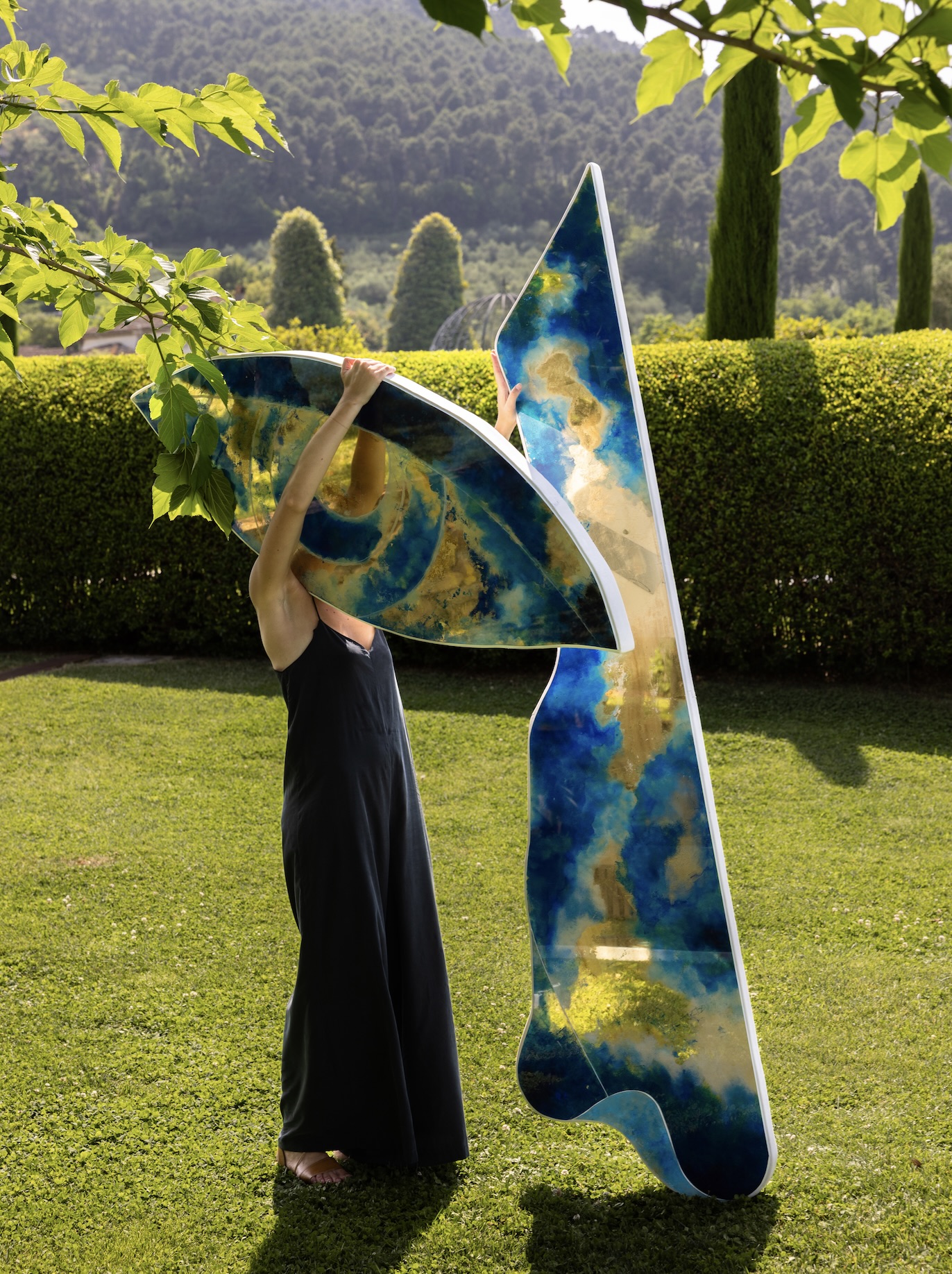
Photography by Dario Borruto featuring Fluid Identity by Sara Ricciardi Studio
Composed of glass plates and painted with pure pigments and reflective gold leaf, the various elements drift apart and reassemble across the water to create visually impactful designs that express the complexity of identity.
‘Fluid Identity represents a reflection of what kind of face we wear and what identities are created in our society,’ shares Ricciardi. ‘In this piece, the lips, the mouth and the nose change position, thus inviting the viewer to answer the question – who are we?’
Identity, time, nature, and our relationship with it run across Costantino Gucci’s early work and his Oculus Celestia mirror exhibited at the villa. With a dabbled, liquid-like effect and contrasting colours, its surface moves as though reflecting water, while an outer ring of glass gives it a sense of lightness.

Photography by Dario Borruto featuring Oculus Celestia by Costantino Gucci
‘I’ve always been fascinated by glass mirrors or any element where you see your reflections,’ shares Gucci. ‘And I don’t see mirrors as a single object showing a reflection, but also a way to reveal your inner thoughts.’
Among the standout pieces of Design in a Real World is Crisalide, designed by Cosimo Bonciani for the Florentine Bunker Gallery. Comprising the Ruggine Blu table and Liva chairs, the pieces nod to a chrysalis, the form taken by some insects like butterflies at an early stage in their development.
‘The metaphor we use here is asking ourselves: what exactly is design?’, ponders Bunker Gallery. ‘Is it just an expression of an idea, or is it a bigger process? So, for us, designing is a process of evolution that changes every day. And this is what, for us, these objects represent.’
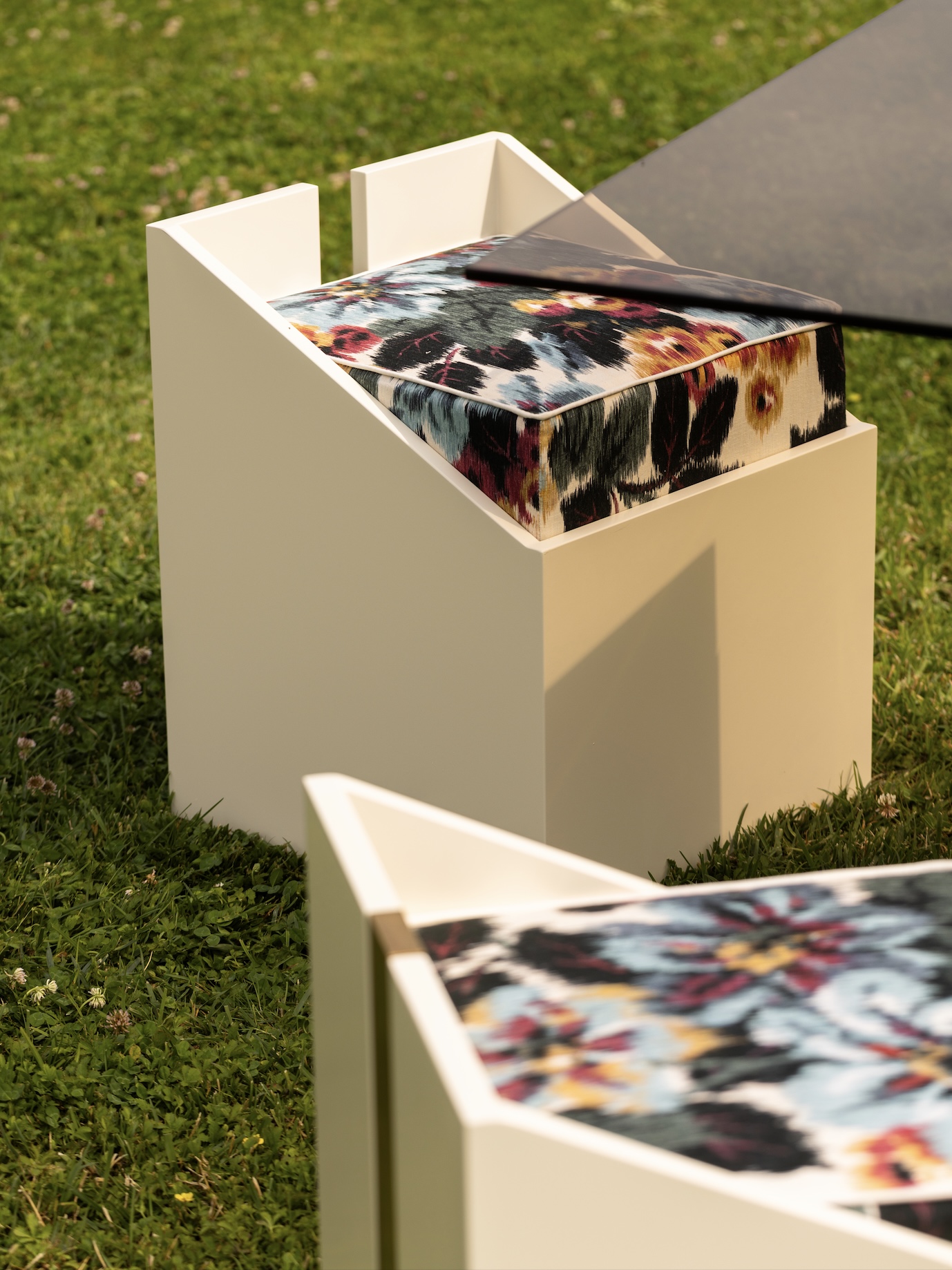
Photography by Dario Borruto featuring Crisalide by Cosimo Bonciani, Bunker Gallery
Characterised by a sturdy central leg and a champagne-coloured glass top, Bunker Gallery explains how the sleek, clean-lined table becomes the base on which the chairs can be stacked to form a totem representing a chrysalis.
All shaped with daring detail and an eye-catching fabric, the chairs are upholstered in an exquisite, abstract floral pattern called L’Orangerie, courtesy of French furnishing house Maison Pierre Frey. The outcome is a striking, high-contrast look that feels modern, fresh and inviting.
Bocca’s fascination with juxtaposition and contrast is one of the exhibition’s central narratives. ‘We don’t just have to organise an exhibition focusing on nature and collectible design,’ adds Bocca. ‘Rather, it’s also good to work with contrast, material and techniques.’

Photography by Dario Borruto featuring Crisalide by Cosimo Bonciani, Bunker Gallery
A case in point is the Metalique coffee table collection by Millim Studio, which, unlike the other designers, hails from Rome. ‘We want to explore the tension of aluminium,’ says cofounder Chiara Pellicano. ‘We love to use our hands to discover new ideas about matter, our territory and the subtraction of material.’
Many of the works featured in Design in a Real World draw on the ideals of Austrian-born American designer and educator Victor Papanek, whose vision of responsible, human-centred and ecological design remains relevant today.
‘I am fascinated by this connection with the territory and the interpretation of ancient material that we have been working with in Tuscany since the [Etruscan] and Roman times as these are old traditions,’ shares Bocca.
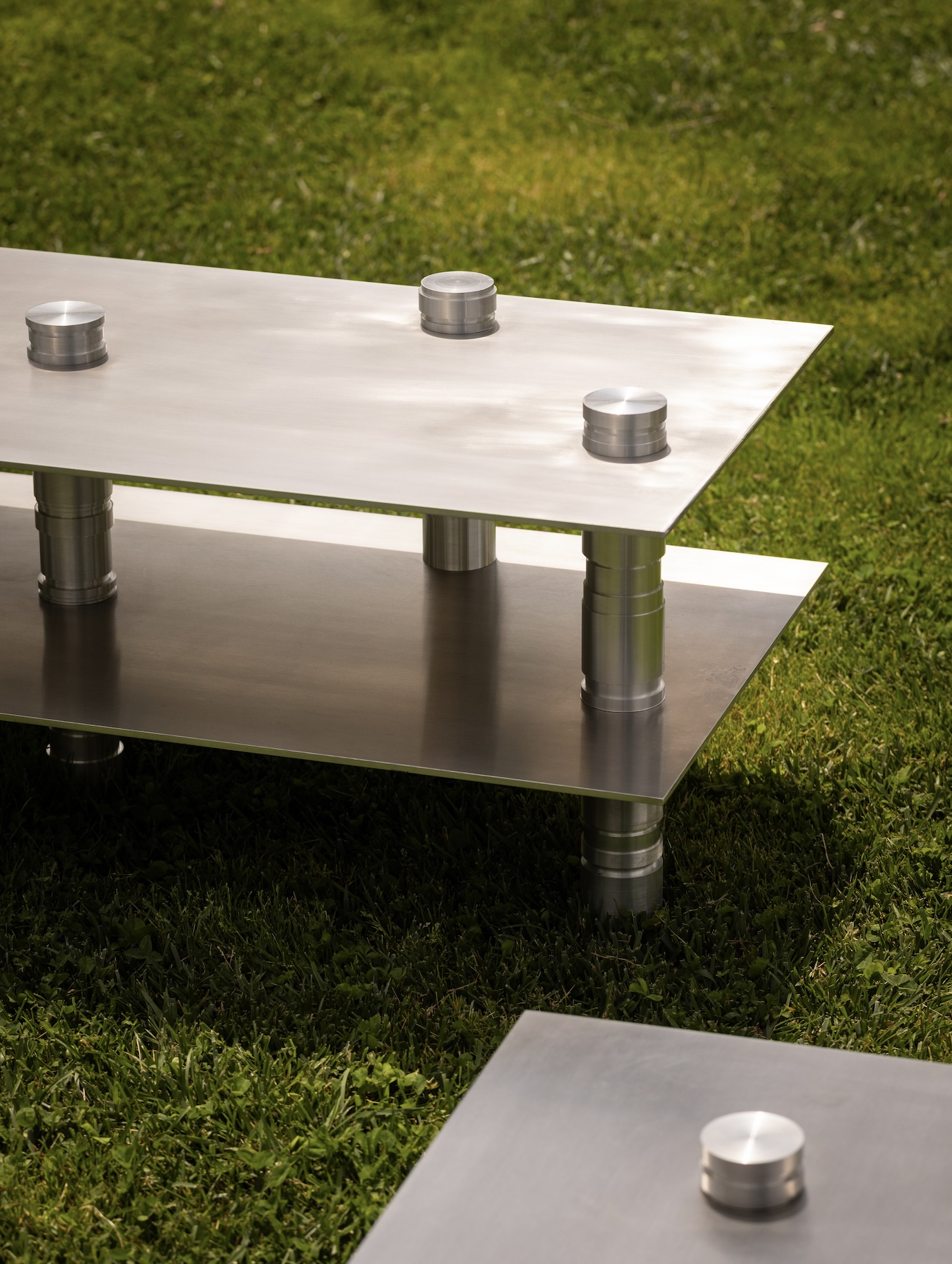
Photography by Dario Borruto featuring Metalique by Millim Studio
Other pieces paying homage to ancient Tuscan materials include Terra Anima and Cross by designer Daniele Giannetti, a collection of handmade vases and candelabras produced using clay sourced from Montelupo Fiorentino.
Also displayed are Ostraka by ccontinua + mamt, large ceramic vases, which draw on amphorae, bones and human relics. These feature intricate engravings, drawings and bas-reliefs in porcelain, with delicate outlines of swan wings, sinuous curves of bodies and two-headed snakes.
Further pieces installed across the villa’s immaculate gardens fit the current spirit of upcycled designs made from discarded materials. Un Pesce Fuor d’Acqua, a giant sculptural fish by Iammi, is crafted from a block of upcycled foam rubber.
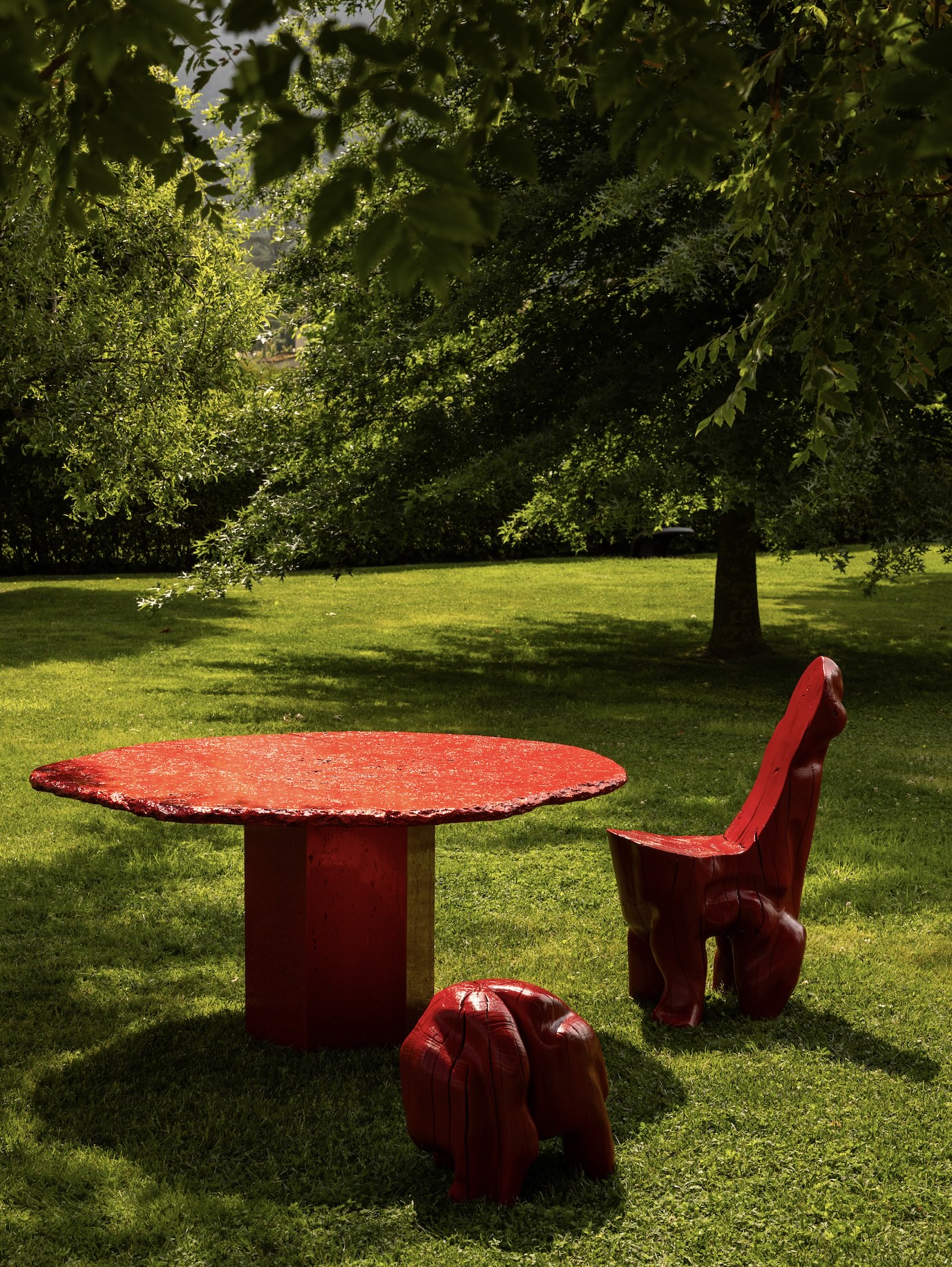
Photography by Dario Borruto featuring Beastly Heart Stool and LoveSeat by Elakform and table 16.51 by Neemesi for Movimento Gallery
In addition, the Inerte Grafico collection presents a bench made from recycled plastic alongside Bocca’s Tradizione II lamp and table – crafted from paper and nodding to Lucca’s centuries-old tradition and significant role in the Italian and European paper industries.
Rounding out the collection are the Beastly Heart Stool and LoveSeat by Swedish Elakform, as well as the 16.51 table by Neemesi for the London Movimento Gallery. The chair and table, finished in a bold, high-gloss red lacquer, were locally sourced from Småland, with the latter made entirely of recycled materials.
‘The exhibition takes place in a historical villa, but this is not solely about preserving tradition,’ ponders Bocca of what inspired him to initiate Vestigia. ‘The selection includes both new and existing projects, chosen for their connection to the local area and their affinity with craft practices. The works embody materiality, care and respect for this unique context.’
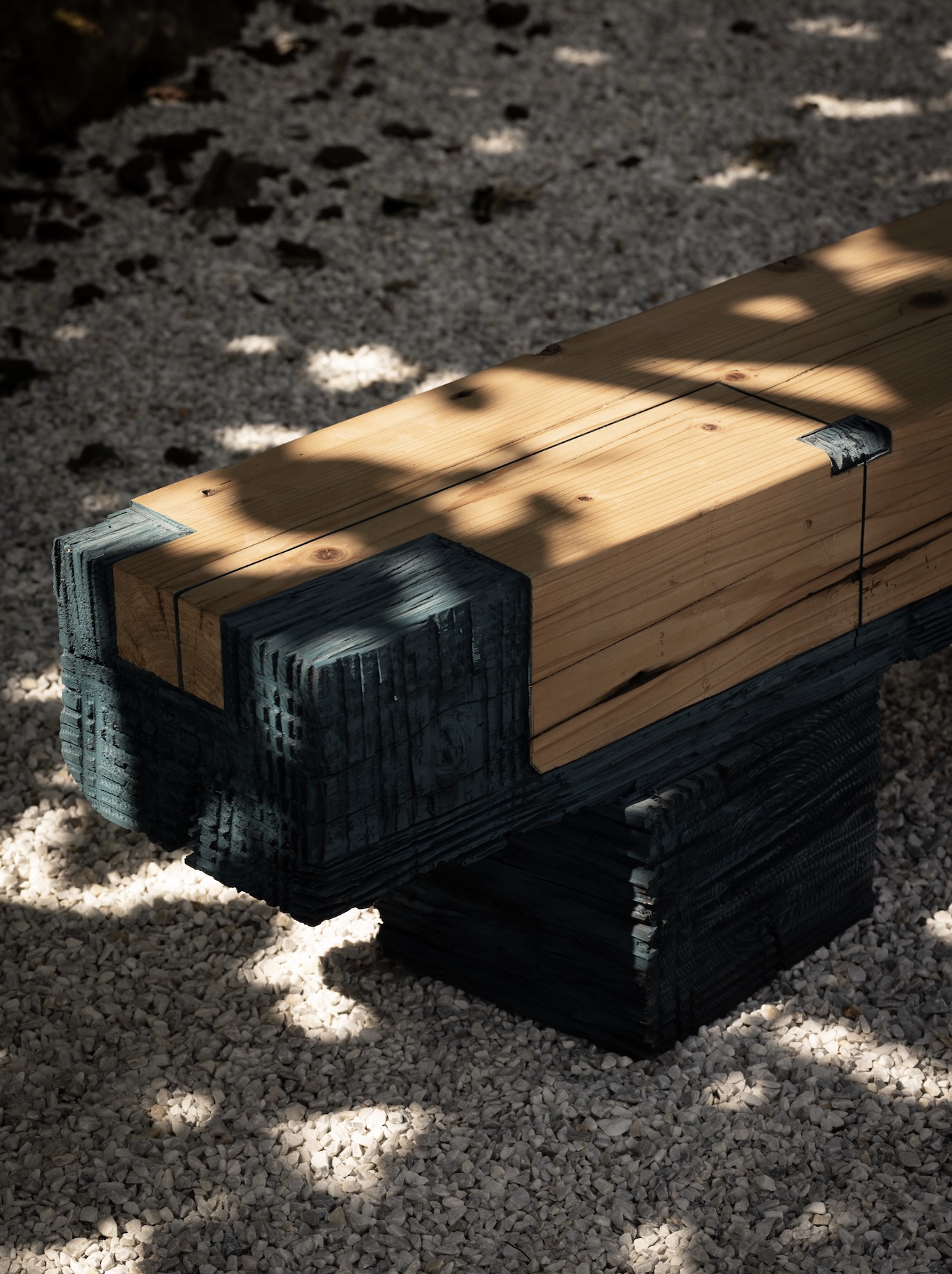
Photography by Dario Borruto featuring Subtraction by Duccio Maria Gambi
Highlighting a variety of mediums, including glass, sculpture, ceramics, and more, Design in a Real World shows how traditional Tuscan artisanship finds new life in the hands of local designers and artists who dare to reinvent heritage in their contemporary works.
Through abstract forms, contrasting materials and meditative processes, Design in a Real World casts a light on the next wave of Tuscan creatives and their commitment to forging new paths for ancient crafts and materials.
Design in a Real World will be on view until 28 September, with visits available by appointment. For more information, visit villamarie.it
Get a curated collection of design and architecture news in your inbox by signing up to our ICON Weekly newsletter

